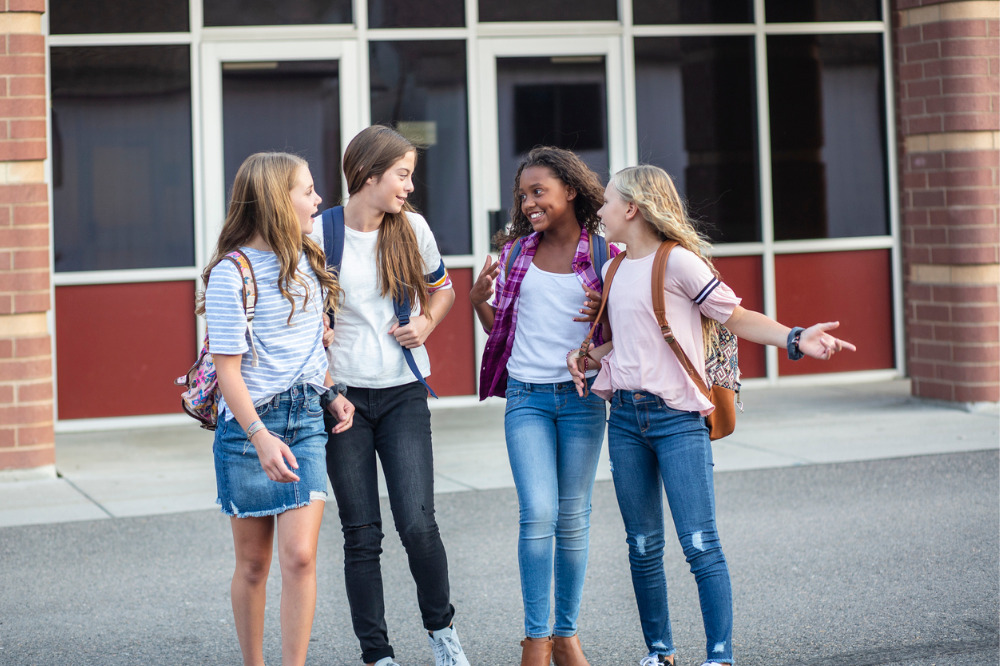
A survey of girls’ schools in Australia showed 77% experienced an increase in enrolments in 2022, demonstrating continued demand for single-sex schools for girls.
With some schools reporting growth of up to 14%, the figures debunk the myth that single-sex schools are in decline. Growth has been led by a strong interest in girls-only education in primary school years.
In 2022 the Alliance of Girls’ Schools Australasia conducted a survey of its member schools in Australia to provide insight into enrolment trends in girls’ schools.
Schools reported adding new classes and even entire year levels to accommodate growing demand for all-girl education. Lourdes Hill College in Brisbane will introduce Years 5 and 6 in 2025 extending the College from secondary into primary schooling.
Loren Bridge, Executive Officer of the Alliance, said that the figures emphasised parent interest and support for single-sex schooling for their daughters.
“This data confirms what we know anecdotally, that despite the upheaval of the past two years, parents still see the benefits that girls’ schools provide,” Bridge said.
The 2020 and 2021 My School data, compiled by ACARA, revealed the impact that Covid travel restrictions and border closures had on schools, particularly schools with boarding and overseas students.
But 2022 showed a bounce back in student numbers.
The Alliance represents more than 80 per cent of Australian girls’ schools across independent, Catholic and government sectors. The 2022 survey asked member schools to report on percentage change in enrolment from January 2021 to January 2022.
Key Findings:
- 77.2% of girls’ schools surveyed experienced an increase in total enrolments ranging from 14% to 0.4%
- 2% experienced no change in total enrolment numbers.
- 20.8% of girls’ schools reported a decline in total enrolments ranging from 8% to 0.02%
- Enrolment in primary years showed strong growth with 69% of schools reporting an increase in primary years
- International enrolments declined by an average of 21.8% and boarding enrolments were down by an average of 4.8%
Schools pointed to the impact of Covid — specifically border closures and travel restrictions for the decline in international students and boarding students and the resultant impact on their overall enrolment numbers.
In addition, schools indicated that Covid-related family relocations, job loss and financial difficulties had an impact on enrolments.
Despite this, the majority of schools reported strong enrolment numbers for 2022. It seems that demand has been aided by the positive insights parents garnered of virtual classrooms during online learning, and the focus on connection and belonging that is a hallmark of girls’ schools.
Bridge said that when asked about the reasons families are choosing girls’ schools the most common reasons provided were: the wellbeing support provided is tailored specifically for girls; unique opportunities available for girls; the confidence an all-girls environment provides.
“This data flies in the face of the repeated, baseless accusations, seen regularly in the media that girls’ schools are going to disappear,” Bridge said.
“It is simply not the case. Overall, girls’ schools did not experience a decrease in enrolments, in fact the opposite is true. There has been an average increase of 1.9 per cent in total enrolments, 3 per cent for primary enrolments, and 2.2 per cent for secondary enrolments.”
Bridge said the declines are confined to two groups — international students and boarding students and are correlated to Covid restrictions.
“The factor that distinguishes girls’ schools is that every aspect of teaching and learning is tailored to girls, every program for wellbeing, healthy development, leadership and learning caters to the needs of girls and this purposefully develops their confidence, empowering them to pursue any direction their talents lead them,” she said.
“An important factor for parents is the absence of boys and lack of gender stereotyping, ensuring girls — at least while they are at school — experience less bullying and are protected from sexual comments and harassment.”
The original version of this article appeared as a press release from the Alliance of Girls’ Schools Australasia.


